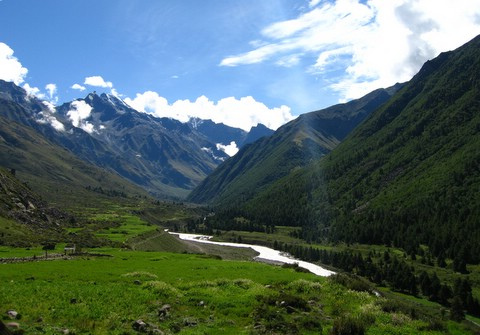
A new reserve in this small mountain state has been accepted by the feline as its new home and their growing presence is being recorded by the camera traps installed by the World Wildlife Fund (WWF).
According to the National Tiger Conservation Authority (NTCA) at least 69 tigers, most of them victims of poaching and accidents have died in the last nine months from January to September this year in the 41 tiger reserves in the country. Of these, 41 died of poaching and accidents while 28 were natural deaths.
Despite the fact that Uttarakhand ranks the state, where mortality of tigers was the highest, but the presence of nine tigers, including a female with cubs in the 150 sq kms area of the Nandhor Valley near Haldwani in Kumaon division of Uttarakhand has come as a pleasant surprise to the wild lovers across the country.
The area which has also been visited by scientists of the Wildlife Institute of India, has got more acceptability than even Corbett National Park. According to a study conducted in the 150 sq kms area of the Nandhor Valley from Tanakpur to Chorgaliya, it was observed that the areas has very high acceptability and tigers are taking to it, like a fish would to water.
World Wildlife Fund observer for the Terai Arc landscape, Dr K D Kandpal feels that the number of tigers that has been recorded is very enthusiastic and feels that they will increase in their new found habitat. What is more interesting is the fact that even the striped hyena, that has become instinct in many areas, has also been found here.
Informed sources said that with the guidelines of the union ministry of environment and forests has almost been prepared and the blue print for enacting laws is on the cards. One that is exciting conservationists is the proposal to ban all construction activities in the tiger corridors, which had become the bane of tiger lovers, as the constriction stopped the movement of the felines from one forest to an adjoining forest.
It may be recalled that it was in 2010 that during the tiger census that the Wildlife Institute of India also identified the tiger corridors in the entire country. The report mentioned the number of tiger corridors that had closed down due to mass construction in them and identified the ones that are still in use in the 41 national tiger reserves in the country.
Incidentally the Sunderkhal corridor, which was used extensively by the felines from moving from the Corbett National Park to Ramnagar forest division and back is no longer used by them because of the number of hotels, resorts and illegal colonies that have come up in the corridor.
The corridor was also used extensively by the animals of the Park and forest division to go to the Kosi river to quench their thirst and cannot do so any longer, which has increased the man-animal conflict in the region.
Because of the problem that has been caused to the wildlife in the area due to the rampant illegal constructions that have come up, a PIL has also been filed in the Uttarakhand High Court to have the illegal constructions removed and the corridor afforested again, so that the wildlife can move about without any hindrance, specially to the Kosi river.
Photo courtesy: Save The Tiger
A journalist with over 40 years of experience, Jagdish Bhatt was Editor, Hill Post (Uttarakhand).
Jagdish had worked with India’s leading English dailies, which include Times of India, Indian Express, Pioneer and several other reputed publications. A highly acclaimed journalist, he was a recipient of many awards
Jagdish Bhatt, aged 72, breathed his last on 28th August 2021 at his Dehradun residence.


